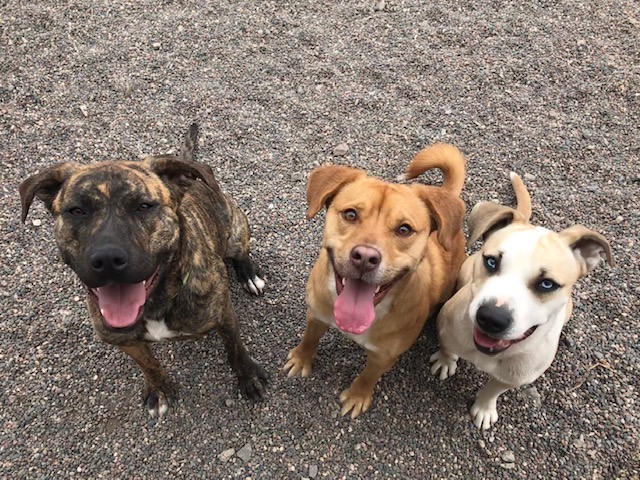Do’s and Don’ts of Puppy Playtime
By: Monica Bock, ZimmVet Daycare Staff

Proper Play in Puppies
Puppies, like children, love to play. However, without the use for apposable appendages, they tend to use their mouths. This is a natural occurrence in dog language and plays an important role in their development.
Just because your puppy “bites” does not mean that they are showing aggressive behaviors or will become aggressive in the future. It is their way of playing, communicating, teething, or experiencing stress. Because our language is vastly different from that of our furry friends, we need to curve this behavior towards humans. To have a well-rounded and a behaviorally healthy pet, it is important as pet parents to teach our puppies to play well with not just other animals, but people as well.
Don’ts of Play
Don’t Leave Children with a Puppy Unattended
Small children do not know any better, and so it not wise to leave a small child and your puppy unsupervised. A child will not be able to pick up on a dog’s stress warnings, which can lead to the child getting hurt. A small child may even pull or fall on the puppy, which in turn can cause them to act out against the child when they normally may not. It is important to remember that even the friendliest puppy can bite if provoked. Play it safe and keep watch, showing the puppy and child to properly interact with each other.
Don’t allow Play with Your Hands
When playing with a puppy, it is almost a natural instinct to play with your hands; however, this can be potentially hazardous later in life and should be avoided to ensure the puppy knows your hands are not toys.
Don’t Play with Objects you do not wish the Puppy to Chew on Later
Do you have an old sock or shoe you no longer want? It may seem fun to give it to your pup as a toy, but keep in mind that this tells your dog that any shoe and sock is okay to play with in the future.
How to Properly Play
Use a toy
Playing with a toy will teach puppies how to interact appropriately with their humans. They will learn what is okay to chew on and what is not okay to chew on, resulting in a less stressed human and a behaviorally healthy puppy.
Use play as a training opportunity
Play time can be fun for both you and your pet! Adding in tricks and basic obedience ques teaches your puppy how to appropriately play, keeps their mind active and teaches them to focus. Even when a puppy is actively doing something it’s always important to make sure they have eyes on you, and are ready to listen while having fun.
Proper way to play tug of war
Many may be skeptical of playing tug-of-war with their puppies; however, it can be played appropriately and teach the puppy good manners in the process. If playing with a tug-toy be sure the puppy doesn’t attempt to grab the toy without your permission, let the puppy know when it is okay to play. You may want to make the puppy sit and wait before initiating the play experience, this teaches your puppy patience and lets them know you will tell them when it’s appropriate to play.
When playing, stay within appropriate behaviors
Be sure to elicit appropriate play even when you and your puppy are in mid-play, your puppy should still listen to you and release the toy if asked to. The other thing to keep in mind is that some puppies may become overstimulated, chewing or biting at objects other than their toy. In some cases, you or even a piece of clothing may be viewed as a toy. Because this is not an appropriate behavior, simply show the puppy by walking away and stopping play. This shows that you don’t like the behavior and that the puppy will no longer get your attention if he continues the action.


